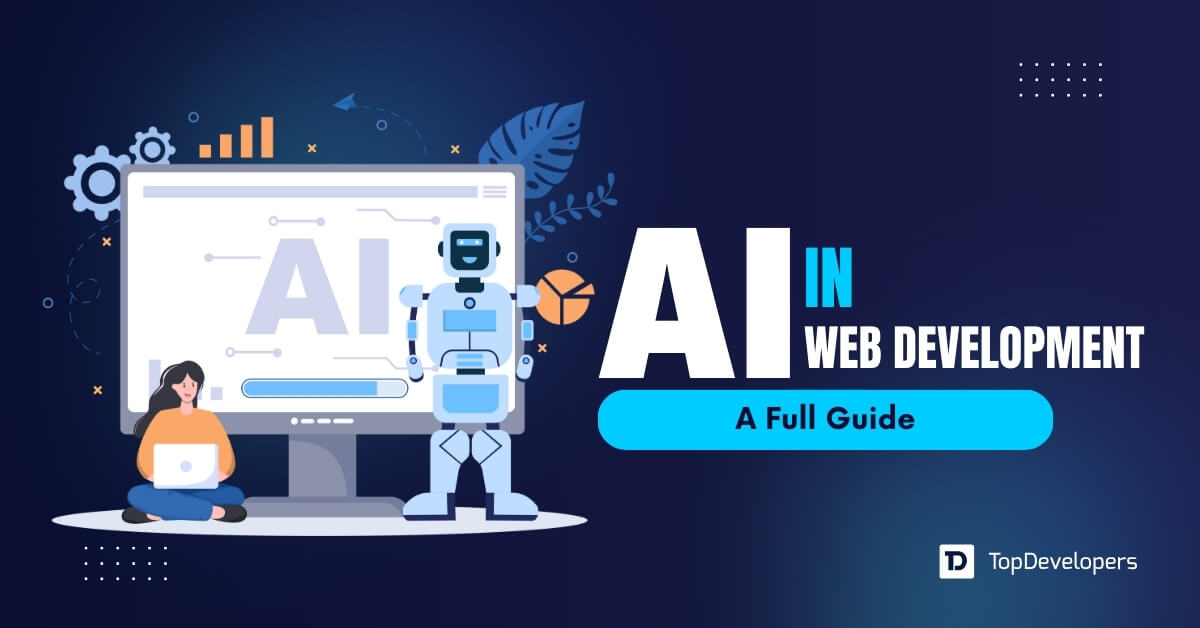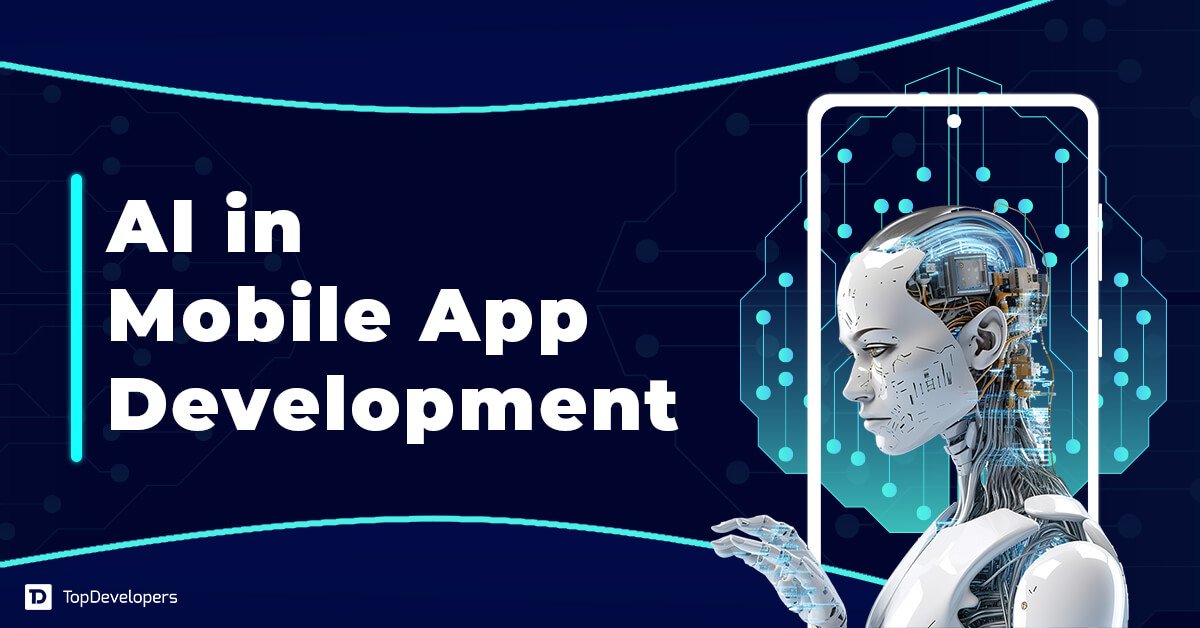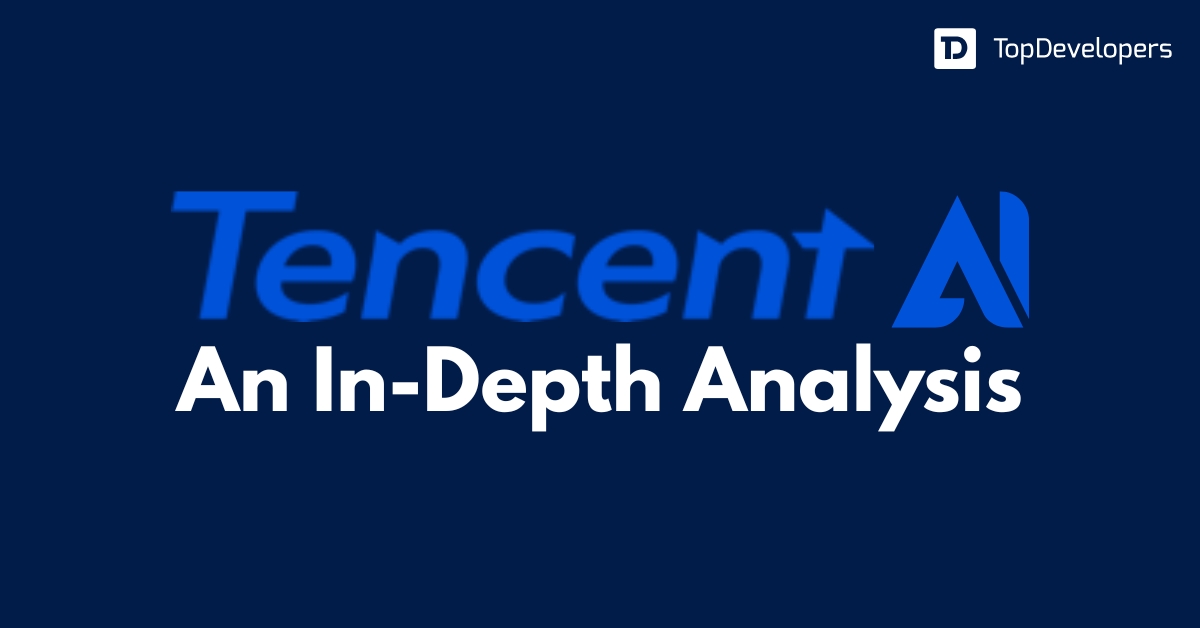
Artificial Intelligence (AI) is becoming a valuable tool for businesses across every sector. It offers better ways to handle data, improve customer service, and streamline operations. However, using AI effectively requires more than just interest. It needs a structured and clear understanding of how AI solutions are built and deployed.
According to Statista, the global AI market is projected to reach approximately 244 billion U.S. dollars in 2025, highlighting the significant investment and growth in this sector.
This blog provides a complete look at the AI development process. It explores each stage in detail, from early planning to long-term support. By understanding this process, businesses can reduce confusion, avoid wasted effort, and gain better results. Whether the goal is to automate tasks or build smart systems, knowing the full AI development life cycle makes planning and decision-making easier.
With the right structure, the procedure of AI development becomes manageable and clear. Each stage brings value and moves the solution closer to real-world results. The sections ahead explain each step in this journey, helping businesses understand how effective AI solutions come to life.
Table of Contents
- AI Development Process: A Step-by-Step Guide
- Step 1: Analyze Business Requirements
- Step 2: Define Core Features and Functionalities
- Step 3: UI and UX Design
- Step 4: Server-Side and Client-Side Development
- Step 5: Refactor Code
- Step 6: Automated Testing and Quality Assurance
- Step 7: Predictive Analysis and Data Preparation
- Step 8: Train the AI Model
- Step 9: Integrate and Deploy the AI Solution
- Step 10: Documentation
- Step 11: Implement AI Adoption Strategy
- Step 12: Monitor and Support
- Conclusion
AI Development Process: A Step-by-Step Guide
Developing an AI solution is not just about training a model or writing code. It involves a structured series of actions that begin with understanding business needs and continue through testing, deployment, and long-term support. Each step is essential and builds the foundation for the next.
By following the full AI development life cycle, businesses can create solutions that are accurate, scalable, and easy to maintain. This AI development process supports better decision-making and helps AI development companies stay focused on their goals. The steps outlined below reflect real-world practices used by many AI development experts and AI companies today.
Step 1: Analyze Business Requirements
The first step in the AI development process is to understand what the business wants to achieve. This involves identifying specific challenges and defining goals that are both realistic and measurable. For example, a business may want to predict customer demand, improve service response time, or detect fraud more accurately.
It is important to ensure that the chosen AI solution can solve the problem effectively. This includes checking the availability of data, understanding the expected outcome, and evaluating possible return on investment. A clear picture at this stage helps set the direction for the rest of the AI development process.
This step of the AI development process also helps align technical teams with business objectives. When both sides are on the same page, the result is more effective planning and smoother execution. AI development specialists often begin with detailed discussions at this phase to ensure the project is built on a strong foundation.
Step 2: Define Core Features and Functionalities
Once the business needs are clear, the next step is to outline the key features the AI solution should offer. These features must directly support the goals identified earlier. Whether it is real-time prediction, natural language response, or automated reporting, the features define what the system will actually do.
This is also the stage where the scope is set. It helps avoid confusion during later phases of the AI development life cycle. Focusing on core functionality ensures that the project stays within budget and time limits while still delivering value.
This planning step allows the AI development company involved to create a clear roadmap. It becomes easier to divide tasks, assign priorities, and choose the right AI technical stacks. For businesses, this means a better chance of building a useful and efficient solution without added complexity.
Step 3: UI and UX Design
User experience is a major part of any AI solution, especially when it involves direct interaction with end users. The interface must be easy to navigate and visually clear. In this step, the focus is on designing the structure and layout of the system. This includes how users input data, how results are displayed, and how the overall interaction feels.
A well-designed user interface ensures that the AI system is not only functional but also user-friendly. This increases adoption across AI development teams and reduces the need for extra training. For internal tools, clean dashboards and simple visual elements can improve decision-making. For customer-facing solutions, a smooth user journey helps build trust and satisfaction.
Involving design teams early in the AI development process leads to better alignment between technical systems and user needs. By planning the user experience from the beginning, businesses avoid having to redesign systems after deployment. This step plays a key role in improving usability and long-term value.
Step 4: Server-Side and Client-Side Development
Once the design is ready, the next step is to build the system infrastructure. Server-side development focuses on the backend, where AI models are stored, trained, and executed. This includes setting up databases, integrating with APIs, and ensuring the platform can handle large amounts of data.
Client-side development is all about the user interface and experience. It connects the backend to the user and makes it easy to interact with the AI solution. This includes coding the layout, controls, and any on-screen features. It ensures that users can access results quickly and reliably.
This phase is where the solution starts to take shape. It also includes selecting programming languages, frameworks, and tools that match the project scope. The AI development agency or AI development service provider involved often finalizes architecture choices at this point to ensure strong performance and security.
Both frontend and backend development must align closely for the AI system to run efficiently. This balance is key to building scalable and stable solutions in the process of AI development.
Step 5: Refactor Code
As the AI solution begins to grow in complexity, it becomes important to review and improve the codebase. Refactoring involves restructuring existing code without changing how it behaves. The goal is to make the code cleaner, easier to maintain, and better optimized for future updates.
This step plays a vital role in improving the performance of the overall system. Clean and organized code allows AI developers to identify potential issues early and fix them before they affect results. It also improves readability, making it easier for different AI development team members to collaborate and build upon the solution.
By focusing on this task, businesses can avoid delays in later stages and reduce maintenance costs. Whether handled by an in-house team or a company providing AI development services, this step is essential for long-term stability and scalability.
A strong code foundation makes it easier to add new features, adjust functionality, or respond to changes in user needs over time. Refactoring supports smoother progress throughout the AI development life cycle.
Step 6: Automated Testing and Quality Assurance
Before an AI solution is used in real-world situations, it must be tested thoroughly. Automated testing helps identify and fix issues faster by running scripts that check different parts of the system. This includes functionality, data handling, performance, and security.
Quality assurance focuses on ensuring that the AI behaves as expected under different conditions. This means checking how the model responds to both common and rare inputs. Test cases are created to see how the solution performs over time and in different use scenarios.
Automation makes this process faster and more reliable. It reduces the chances of human error and ensures that every part of the solution is reviewed. This also supports continuous improvement, allowing AI development companies to make changes without breaking existing features.
During this phase, businesses work with AI development specialists to fine-tune system behavior and correct mistakes. Careful testing and quality control help reduce future errors and improve the overall reliability of the solution. This step strengthens the entire AI development process and gives businesses more confidence before moving to deployment.
Step 7: Predictive Analysis and Data Preparation
Before training begins, the data must be fully prepared for the AI model. This includes both collecting the right data and understanding how it can be used to generate insights. Predictive analysis helps determine which data points are likely to be the most useful. It also helps in shaping the model’s ability to make accurate predictions.
Data preparation involves several key tasks. These include cleaning the data, handling missing values, converting formats, and organizing it in a way that the model can understand. The goal is to build a solid data foundation that reflects real-world use cases and supports the intended outcomes.
This step is often guided by AI specialists who have experience in selecting and transforming data for AI models. Predictive analysis, when done correctly, reveals important patterns that can improve model performance. In this phase, businesses benefit by taking time to evaluate which data sources truly add value to the model’s learning process.
This part of the AI development process ensures the system starts with strong input, which is critical for accurate and reliable output later.
Step 8: Train the AI Model
With data prepared, the next step is to train the AI model. This is where the system begins to learn from examples. Training involves feeding large volumes of data into the model and allowing it to find patterns, relationships, and useful outputs.
The process includes selecting the right algorithm, adjusting settings, and running multiple training cycles. Each cycle improves the model’s ability to make accurate predictions. The goal is to reach a level where the model performs well not just on training data, but also when faced with new information.
Monitoring progress during training is important. Businesses often rely on AI development experts to track metrics like accuracy, precision, and recall. If the model does not perform as expected, changes are made either to the algorithm, the training data, or the training method.
This step is central to the AI development life cycle. A well-trained model is the result of many decisions made in earlier steps, and its quality affects the performance of the entire solution. With proper attention to training, businesses create AI systems that deliver consistent and useful results.
Step 9: Integrate and Deploy the AI Solution
Once the model is trained and tested, it is time to bring it into the real business environment. Integration connects the AI system to the tools, platforms, and processes already in place. This ensures that the AI can receive inputs, deliver outputs, and work within the existing workflow.
Deployment is the final move from testing to live usage. It involves setting up the infrastructure so the solution can run continuously and handle real-world demands. This may include using cloud platforms, setting up APIs, or embedding the model into applications. Each decision is made to ensure smooth operation, security, and performance.
During this phase, it is also important to consider how the system will scale. The solution should be able to handle more users, more data, and more requests without performance issues. AI development agencies often build this flexibility into the architecture to support future growth.
Proper integration and deployment allow businesses to begin seeing value from their AI investment. This step makes the transition from concept to working product complete and prepares the system for everyday use.
Step 10: Documentation
After deployment, proper documentation becomes essential. It records how the AI solution was built, how it works, and how it should be used or maintained. This includes details about model structure, data handling, feature design, and technical configurations.
Clear documentation supports future updates and reduces the learning curve for new team members. It also helps when handing over the project to a new AI development team or when the system needs to be scaled. Without proper records, even small changes can lead to confusion or errors.
Businesses that rely on company-provided AI development services often ask for complete technical documentation at this stage. It includes setup guides, architecture diagrams, usage instructions, and troubleshooting notes.
This step of AI development process supports transparency and helps ensure that the AI solution remains functional and understandable over time. Good documentation adds long-term value by making future changes easier and more predictable.
Step 11: Implement AI Adoption Strategy
Once the AI solution is live, it is important to ensure it becomes part of regular business operations. This means creating a clear adoption strategy that supports the people who will use it. AI development companies need to understand how the system works, what it offers, and how to use it effectively.
A good AI development strategy includes simple guides, training sessions, and clear communication about the AI system’s purpose. It helps reduce resistance to change and builds confidence among users. Businesses that plan for adoption from the start often see better results after deployment.
This step also helps track how the system is being used in practice. It allows businesses to see which parts are most helpful and where users may need more support. An AI development company may provide tools or methods to help measure user feedback during early use.
Adoption is not just about using AI. It is about making AI useful in real work settings. A strong strategy helps close the gap between building the system and making it part of the business culture.
Step 12: Monitor and Support
AI systems continue to learn and change after deployment, so they must be monitored regularly. This includes tracking how well the model performs, how often it is used, and whether the results stay accurate over time.
Support teams should be ready to respond to issues quickly. If a model starts to show errors or unexpected behavior, adjustments must be made. This might involve updating data, retraining the model, or adjusting the system settings.
Regular updates also help the system grow along with the business. As needs change or new features are added, the AI solution should be able to adapt. AI developers and AI development service providers often set up tools that automate some of this work and reduce manual effort.
Ongoing monitoring and support are key parts of the AI development life cycle. They help maintain quality, extend the solution’s life, and ensure continued business value.
Conclusion
The AI development process involves more than technical expertise. It requires clear planning, strong communication, and consistent effort across every stage. From understanding business needs to deploying and supporting AI solutions, each step plays a role in delivering systems that are reliable, scalable, and valuable over time.
By following a well-defined AI development life cycle, businesses can reduce risks and align their technology with long-term goals. This structured approach helps AI development companies stay focused, reduces unnecessary changes, and leads to smarter use of resources. It also supports innovation by turning data into decisions and ideas into practical tools.
The top AI development companies follow this step-by-step approach as a standard. Their ability to maintain quality and consistency across complex projects reflects the importance of the process itself. For businesses planning to explore AI, understanding the full procedure of AI development brings clarity, direction, and better results.
 Gillian Harper
| Apr 22, 2025
Gillian Harper
| Apr 22, 2025
A professionally engaged blogger, an entertainer, dancer, tech critic, movie buff and a quick learner with an impressive personality! I work as a Senior Process Specialist at Topdevelopers.co as I can readily solve business problems by analyzing the overall process. I’m also good at building a better rapport with people!


